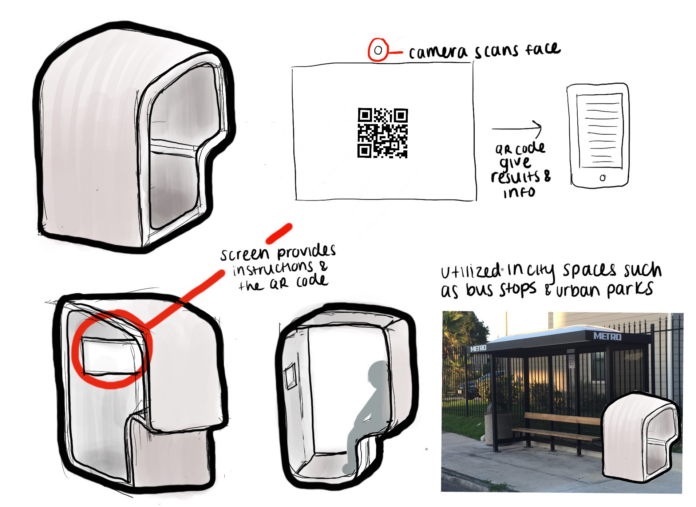Throughout my research, I identified three main barriers associated with a lack of education and action to prevent and monitor high blood pressure. The first is the cost, referring to the cost of at-home monitors and the cost of doctor visits. The second is a disinclination towards keeping up with monitoring. Many people do not understand the severity of the issue and therefore do not see an urgency to track their blood pressure. Lastly, existing products such as cuffs and apps lack good UX design, making them hard to use.
HeartHub is a piece of public furniture that measures blood pressure through a new type of technology called transdermal optical imaging software. This technology uses a camera to collect physiological data from your face and translates it into a blood pressure reading. The process takes two minutes. HeartHub would have a small screen across from the user. When motion is detected, the screen would display a brief introduction. Then the scan would begin and a two minute video would be displayed. The video may be a peaceful video loop to increase relaxation among users. During this time, the camera above the user would scan their face. After enough data is collected, a QR code would appear on the screen. Users can scan the code to gather their results. The results would be accompanied by explanations of what the measurement means and next steps the user can take in preventing high blood pressure.
Additionally, all interactions with the screen and camera would be touchless making this project more COVID-19 friendly than existing interfaces that require touch interaction.
The main goal of HeartHub would be to increase public knowledge on hypertension and offer measurements to people at no cost, ultimately increasing education on the seriousness and prevalence of high blood pressure.




